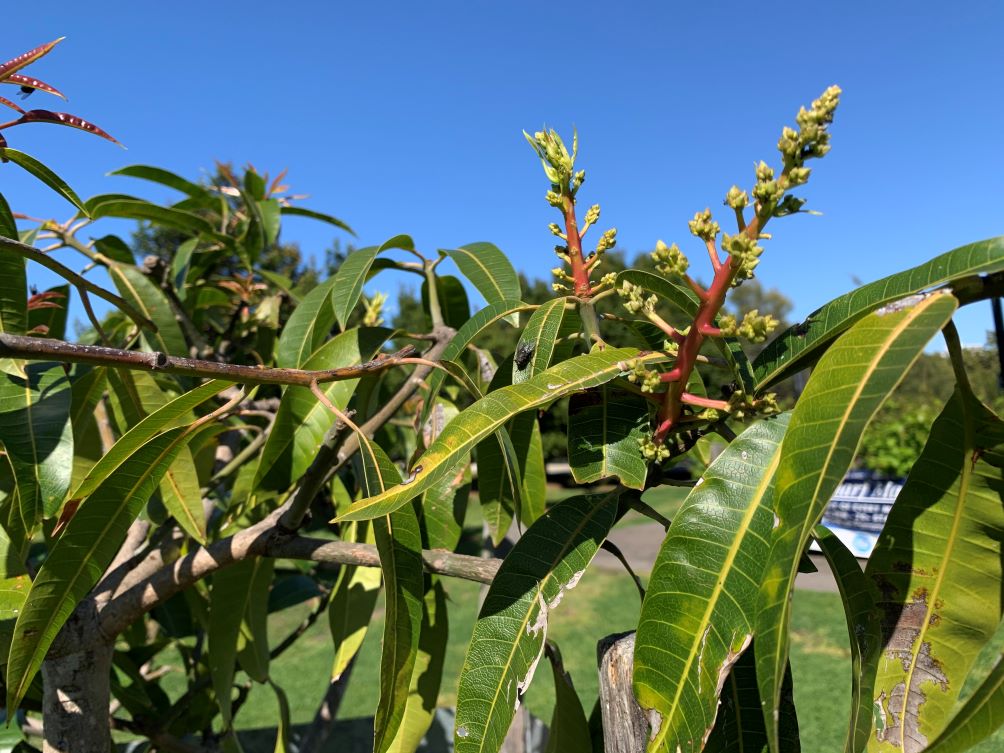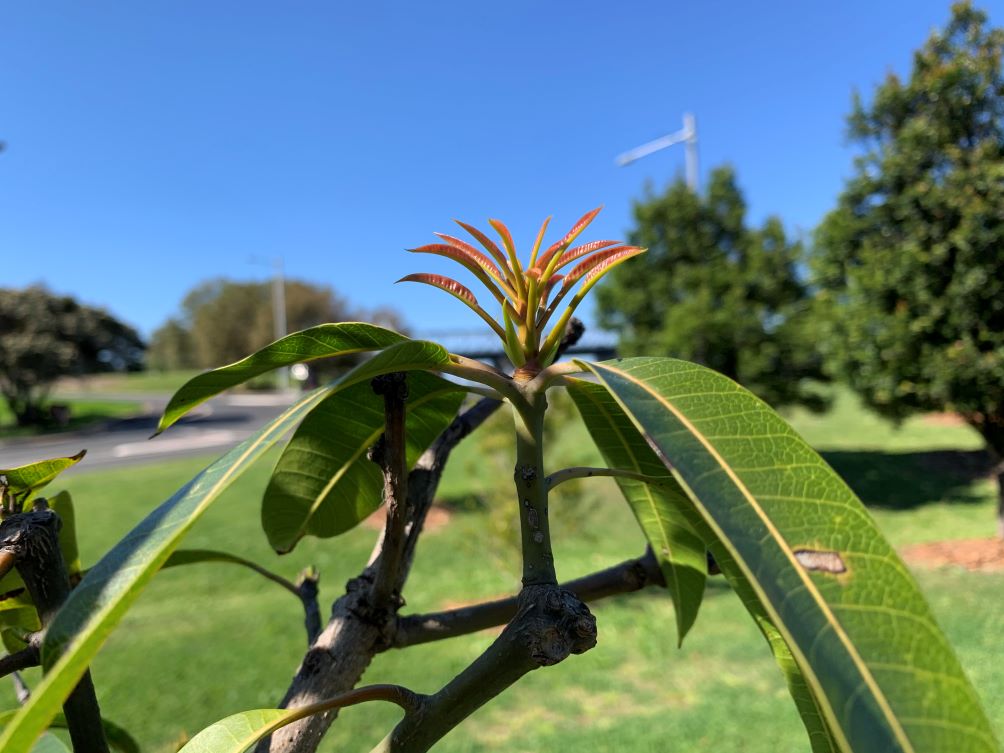Growing mangoes in contains is great if you have a small yard, if you live in a frost prone area or have low soil depth. Mango trees can be kept smaller in containers and be moved into a protected area over winter when frosts are more likely. This will protect their leaves from damage and allow the container to be moved back into a sunny position over Summer to ripen the fruit.
Growing a mango tree in a container is fantastic if you are renting and want to take your mango tree with you if you move. Mango trees can be just as productive when grown in a container compared to in the ground as you can keep them small and focused on growing fruit rather than large branches.

Mango trees will flower and fruit sooner when moved into a container just one size bigger than the one it was in. It will focus less on growing a huge root system and branches and more on growing flowers and fruit.
Best containers for mango trees
When planting up a new mango tree choose a container that is one size bigger than the current root ball. This means choosing a pot or container that is around 3-4 inches wider and deeper than the one it came in.
Choosing a container that is one size bigger will allow the plant to be gradually moved to a larger one as it grows. The soil will not get too cold or wet on the outside of the roots which can avoid root rot or disease.

When to plant your mango in a container
The two best times to plant out a mango tree into a container is in Fall and Spring. Because mango trees hate cold weather and frosts it is best to plant them out during mild weather to give them a chance to establish their root system.
When planting a new mango tree into a container in Fall, leave it out a bright sunny position until the cold winter weather arrives. After this it can be moved into a protected position to avoid frost damage or being affected by cold winter winds.
Soil for container grown mangoes
Soil choice is important when growing mangoes in containers. Choose a potting soil or raised garden bed mix that contains a slow release fertilizer, compost and sand. This will hold the structure for the mango in the pot and prevent the soil level dropping as quickly.
You can also mix up to ¼ river sand or horticultural sand into the potting soil mix to increase stability of the soil structure in the pot.
Fertilizer for mango trees in containers
Fertilizer is important for mangoes grow in containers as they will be reliant on you to get the nutrients they need. Starting off with a good quality potting soil will help the mango tree to establish as it will contain up to 3 months of fertilizer.
After this time, add pelleted chicken manure to the tree in Spring to give it a nutrient boost before it produces fruit.
The plant will flower and set fruit over spring and summer if it has been given a good feed of nutrients. I like to choose organic fertilizers as this is a natural way to feed the plant and soil bacteria.
Watering mango trees in containers
Regular water is important to keep your mango tree healthy when growing them in a container. Those grown in dark colored pots will need to be check as the pot can heat up quickly and dry out if it is sitting in the sun.
Raised garden beds or larger container will keep the soil moist for longer. Mango trees in containers may need to be watered up to 2-3 times per week in the summer if there is low rainfall. Watering them each week in Spring or Fall when they are establishing is important to make sure the roots don’t dry out.
Mulch can be placed on the top of the pot to slow down the water evaporation. I like to use bark mulch on the top of large potted plants as it looks great and keeps the soil moist. You can also use sugar cane mulch, straw or pea straw mulch on top of the container.
Types of mangoes for containers (dwarf types)
Dwarf mangoes are best for pots as they will be grafted onto hardy root stock and will stay small while still producing fruit. Carrie, Cogshall, Pickering, and Fairchild. If you live in Australia, Sensation, Palmer or Irwin are popular choices.
Can you keep a mango tree small?
Mango trees can be kept small in containers even though the full sized trees can grow huge. Keep your mango tree as small as you like (within reason). Trim back any long stems to a maximum of 6 feet for the perfectly sized tree to reach the top.
You can let mango trees get wider without becoming taller by trimming off the tops of stems in Spring if they are getting out of hand. Mango trees handle pruning well but take your time and step back when trimming to make sure the shape looks balanced.
Trees that are trimmed so they have more growth on one side can tip over if they are in a small container.
Growing mango trees in containers | Summary
Mango trees grow perfectly well in containers if you get the soil right, choose the right size container and keep it well watered. Choose a dwarf mango tree to keep the size small and make sure you trim it each year to keep it balanced, in a nice shape and small enough to reach the top.
Mango trees grown in containers can still grow lots of full sized fruit and are perfect if you live in a cooler region. This means you can move it into a protected area when there is a chance of frost.
Mango Tree Articles
- Mango trees growing slow | How to help them grow 2X faster
- How to stake a mango tree | Step-By-Step Guide
- Grafted mango tree vs seedling mango tree | Which is better?
- Are mango trees evergreen? | Do they lose their leaves in Winter?
- Are mango trees self pollinating? | Do I need more than 1 mango tree?
- Growing mango trees in containers | Simple steps to success
- Where to plant a mango tree | Easy guide for your yard
- How often to water a mango tree | Spring, summer + winter guide
I am an accredited practicing dietitian, experienced gardener and a dedicated cook. I love writing and sharing my experience so you can learn from my successes and mistakes.
